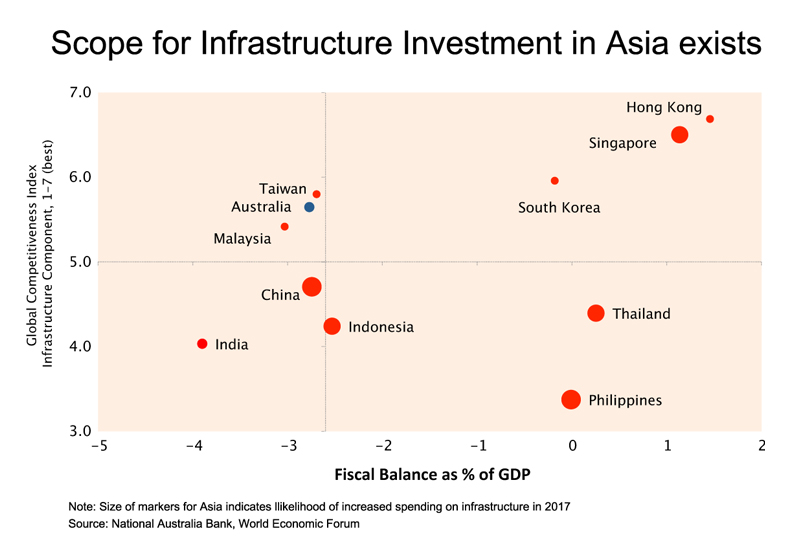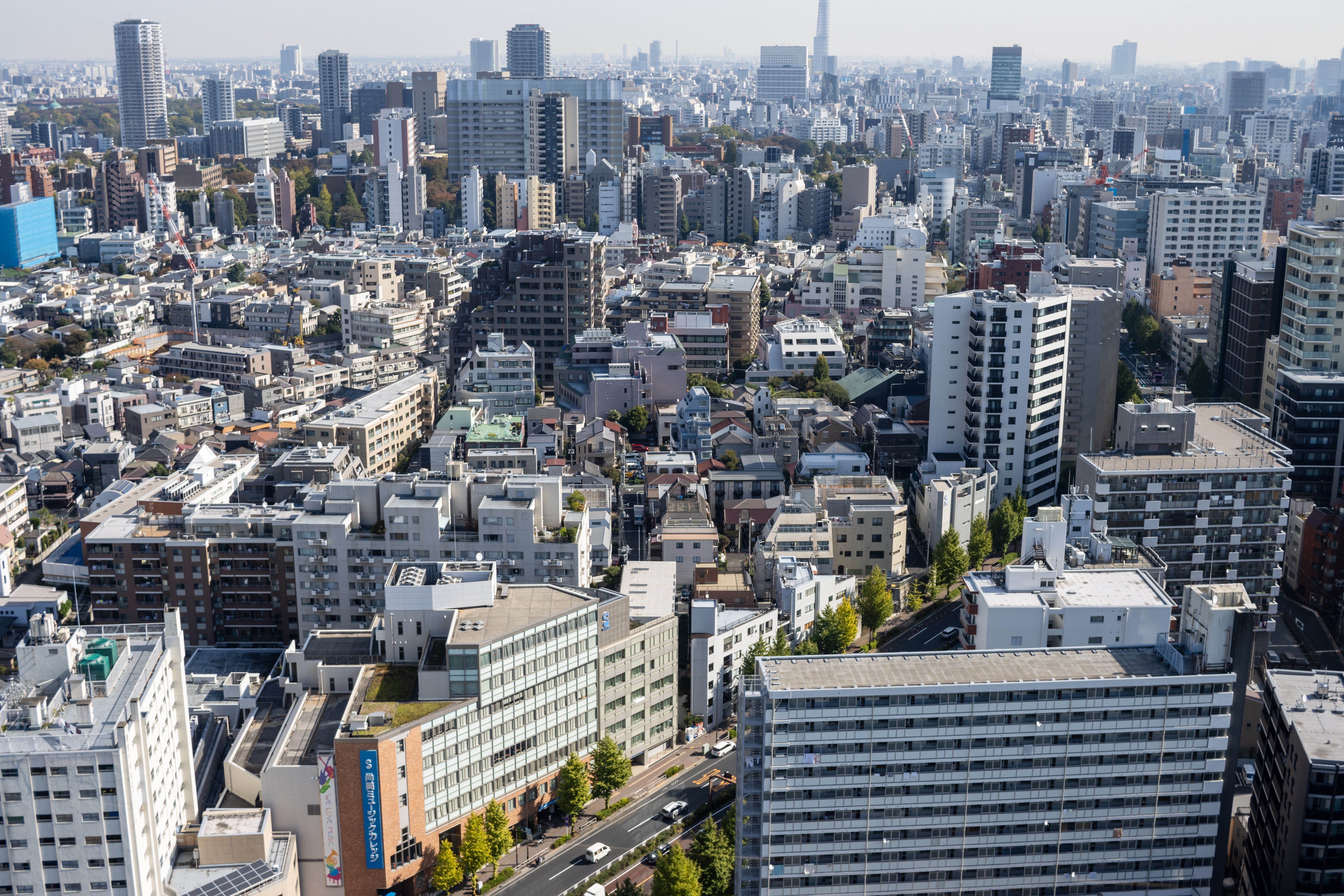Emerging Market Asia will need to increase infrastructure spending substantially to meet the demands of rapid urbanization and economic growth, according to a 2016 report by the Asia Development Bank. One estimate the report cites suggests the need to raise spending from around 3% of GDP to 6-8% of GDP.
The World Economic Forum’s Global Competitive Index includes a survey of the quality of infrastructure worldwide. The index covers transport infrastructure and telephony infrastructure, on a scale of 1-7, with 7 being the best. The graph then compares this with the country’s fiscal balance as a percentage of GDP, giving an idea of those countries which have the need to invest more in infrastructure, and whether they have the current budget means.

According to Christy Tan, head of markets strategy/research, Asia, at the National Australia Bank, “The economies in the lower half of the chart above generally could use some sprucing up of their infrastructure facilities, while those in top half generally have relatively strong infrastructure capacity and need to be more selective about spending. This is especially so for those in the top left quadrant, where fiscal deficits are already substantial. Those in the bottom right have the need to spend and the wherewithal to do so.”
Singapore is in the midst of its continued work on its Mass Rapid Transit system (MRT), aiming to have a station with 10 minutes-walk from 80% of households by 2030 (up from 60% in 2015). China is aiming to increase its rail network to 80% of its major cities by 2020. This target would require spending 3.5 trillion yuan (US$503 billion).
Indonesia is building a railway line to connect Jakarta to Bandung for completion in 2019. The Philippines have announced plans to increase infrastructure spending from 3.5% of GDP to 5.7% by 2022.
“Both Indonesia and the Philippines are likely to be fairly willing to push strongly for increased infrastructure spending given that their debt positions have improved sharply over the last decade or so, with sovereign ratings of both having been elevated to investment grade by all major ratings agencies,” says Tan.
The government of Thailand has announced 36 new infrastructure projects worth US$25 billion, to begin this year, and is involved in several plans to building a high speed rail, from Singapore to Kunming, Myanmar to Vietnam, and linking Thailand and Laos.
“Across the economies in the bottom half of the chart, almost all have budgeted increases in fiscal expenditure. Not all are letting that feed into budget deficits though – the Philippines, for example, is looking at raising taxes to keep the deficit in check, but still fund increased spending on infrastructure. China, Indonesia, and Thailand though are widening their deficits marginally, at least partially to fund more infrastructure investment,” says Tan.









